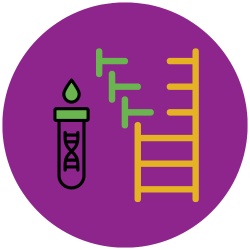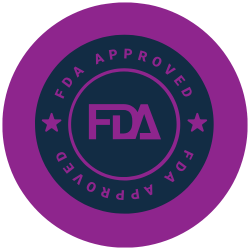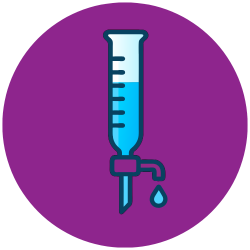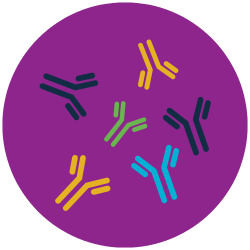AAPS PharmSci 360 2025: conference highlights

If you didn’t manage to attend the American Association of Pharmaceutical Scientists (AAPS) PharmSci 360 2025 conference (November 9–12; San Antonio, TX, USA), we’ve pulled together some of the highlights and key bioanalysis updates you might want to check out.
Key highlights:
- Chalk talk: From founding to expansion in 12 months – a story of rapid growth from Dash Bio
- Experts discussed the new 2025 FDA BMVB guidance for biomarkers
- Axcend showcased their compact chromatography tools for real-time PAT and reaction monitoring
- Lovelace Biomedical presented their research on RNA extraction and singlicate use in LBA
- Genentech shared results from high-speed MS techniques for next-generation biotherapeutics
Chalk talk: From founding to expansion in 12 months – a story of rapid growth from Dash Bio
 Dash Bio (MA, USA) Co-founder Ander Tallett shared the remarkable story of Dash Bio’s rapid growth trajectory, detailing how the company progressed from securing pre-seed funding to successfully completing a seed round and securing a 25,000 square foot facility lease, all within a single year of launching. The expansion reflects a surging demand for Dash Bio’s tech-first bioanalysis approach, which delivers GLP-compliant sample analysis up to 10x faster through automation, AI and robotics.
Dash Bio (MA, USA) Co-founder Ander Tallett shared the remarkable story of Dash Bio’s rapid growth trajectory, detailing how the company progressed from securing pre-seed funding to successfully completing a seed round and securing a 25,000 square foot facility lease, all within a single year of launching. The expansion reflects a surging demand for Dash Bio’s tech-first bioanalysis approach, which delivers GLP-compliant sample analysis up to 10x faster through automation, AI and robotics.
The company has also recently enhanced its capabilities by adding digital droplet PCR (ddPCR) using Bio-Rad’s advanced QX700 system, particularly valuable for gene and cell therapy programs requiring absolute quantification and high sensitivity. The QX700’s 7-color system enables multiple targets to be analyzed simultaneously in a single reaction, reducing required sample volumes while accelerating processing times. This differentiated automated approach has enabled Dash Bio to meet the growing demand from biotech sponsors seeking faster IND-enabling bioanalysis without compromising quality, positioning them as a standout success story in an industry seeking innovation and efficiency.
Hot topic: 2025 FDA guidance BMV for biomarkers: impact and path forward
 Experts from PharmaCadence (PA, USA), SPARC (NJ, USA), Immunologix Labs (FL, USA), Prothena Biosciences (Dublin, Ireland) and AstraZeneca (Cambridge, UK) gathered to discuss the FDA’s (MD, USA) new 2025 Bioanalytical Method Validation for Biomarkers (BMVB) guidance that replaces the 2018 BMV. The new guidance does not introduce major changes, establishing ICH M10 (PK method validation) as the starting point while acknowledging that many aspects cannot be directly applied to biomarker assays or different analytical platforms. The guidance reinforces the biomarker community’s long-standing fit-for-purpose approach, recognizing that differences between PK and biomarker assays require different validation strategies, and emphasizes that the Context of Use (COU) remains the cornerstone of biomarker assay validation. The updated guidance requires that assay parameters and validation approaches must exactly support the biomarker’s proposed COU, with different assay characterizations properly justified and reported, ensuring reliable data while respecting the unique biological and analytical characteristics of biomarker work compared to traditional pharmacokinetic methods.
Experts from PharmaCadence (PA, USA), SPARC (NJ, USA), Immunologix Labs (FL, USA), Prothena Biosciences (Dublin, Ireland) and AstraZeneca (Cambridge, UK) gathered to discuss the FDA’s (MD, USA) new 2025 Bioanalytical Method Validation for Biomarkers (BMVB) guidance that replaces the 2018 BMV. The new guidance does not introduce major changes, establishing ICH M10 (PK method validation) as the starting point while acknowledging that many aspects cannot be directly applied to biomarker assays or different analytical platforms. The guidance reinforces the biomarker community’s long-standing fit-for-purpose approach, recognizing that differences between PK and biomarker assays require different validation strategies, and emphasizes that the Context of Use (COU) remains the cornerstone of biomarker assay validation. The updated guidance requires that assay parameters and validation approaches must exactly support the biomarker’s proposed COU, with different assay characterizations properly justified and reported, ensuring reliable data while respecting the unique biological and analytical characteristics of biomarker work compared to traditional pharmacokinetic methods.
Axcend showcased their compact chromatography system for real-time reaction monitoring
 Axcend (UT, USA) introduced compact capillary liquid chromatography technology that enables real-time process analytical technology (PAT) monitoring directly at manufacturing sites. The company’s InFocus™ direct sampling module, paired with the Axcend Focus LC® system, delivers automated sampling and analysis capabilities in a compact form factor that fits into fume hoods and glove boxes. In collaboration with Pfizer (NY, USA) and Rowan University (NJ, USA), the team demonstrated that the technology continuously monitored pharmaceutical reactions successfully with consistent repeatability over extended periods. The capillary-scale system significantly reduces solvent use and sample volume while addressing size limitations that have restricted PAT adoption in the past.
Axcend (UT, USA) introduced compact capillary liquid chromatography technology that enables real-time process analytical technology (PAT) monitoring directly at manufacturing sites. The company’s InFocus™ direct sampling module, paired with the Axcend Focus LC® system, delivers automated sampling and analysis capabilities in a compact form factor that fits into fume hoods and glove boxes. In collaboration with Pfizer (NY, USA) and Rowan University (NJ, USA), the team demonstrated that the technology continuously monitored pharmaceutical reactions successfully with consistent repeatability over extended periods. The capillary-scale system significantly reduces solvent use and sample volume while addressing size limitations that have restricted PAT adoption in the past.
“For years, the size and complexity of traditional LC systems have limited how and where PAT could be used,” explained Axcend CEO Greg Ward. “Now we can put the analysis right next to the reaction.” The breakthrough supports the pharmaceutical industry’s growing emphasis on real-time quality control and data-driven manufacturing, with the technology being showcased at the AAPS PharmSci 360 conference.
Advancing laboratory efficiency with improved RNA extraction and biomarker testing methods
 Ruwini Rajapaksha from Lovelace Biomedical (NM, USA) shared results from a new comparative study that identified significant improvements in molecular biology laboratory workflows through optimized RNA extraction protocols. Her team evaluated four commercially available high-throughput RNA extraction kits using automated platforms across six different non-human primate tissue types, finding that while all kits delivered high RNA purity, the MagMAX™ mirVana™ Total RNA Isolation Kit demonstrated superior accuracy and reproducibility for high-quality RNA applications.
Ruwini Rajapaksha from Lovelace Biomedical (NM, USA) shared results from a new comparative study that identified significant improvements in molecular biology laboratory workflows through optimized RNA extraction protocols. Her team evaluated four commercially available high-throughput RNA extraction kits using automated platforms across six different non-human primate tissue types, finding that while all kits delivered high RNA purity, the MagMAX™ mirVana™ Total RNA Isolation Kit demonstrated superior accuracy and reproducibility for high-quality RNA applications.
In a parallel discovery for biomarker testing workflows, the team successfully validated singlicate analysis as an alternative to traditional duplicate testing in ligand binding assays, showing that single-sample testing matched duplicate accuracy with differences of less than 5%, while significantly reducing time, materials and manual errors. The singlicate method demonstrated improved quality control performance and reduced variability between analysts across 50 ELISA plates measuring interferon-gamma in blood samples. These standardization advances could offer laboratories substantial cost and time savings while maintaining scientific rigor, with broad applications spanning molecular biology, gene therapy and cell research workflows.
High-speed MS techniques for next-generation biotherapeutics
 Researchers from Genentech (CA, USA) explored innovative MS approaches to analyze emerging therapeutic modalities, addressing challenges in quantifying complex biotherapeutics like multivalent antibodies and antibody-drug conjugates (ADCs). Using a multivalent antibody model, the team combined affinity capture with intact protein MS, incorporating SampleStream and high-field asymmetric waveform ion mobility spectrometry (FAIMS) technologies to achieve high-throughput sampling within 30-second injection intervals while improving signal-to-noise ratios by 30%. The integrated workflow successfully quantified analytes between 0.1 to 25 µg/mL in serum.
Researchers from Genentech (CA, USA) explored innovative MS approaches to analyze emerging therapeutic modalities, addressing challenges in quantifying complex biotherapeutics like multivalent antibodies and antibody-drug conjugates (ADCs). Using a multivalent antibody model, the team combined affinity capture with intact protein MS, incorporating SampleStream and high-field asymmetric waveform ion mobility spectrometry (FAIMS) technologies to achieve high-throughput sampling within 30-second injection intervals while improving signal-to-noise ratios by 30%. The integrated workflow successfully quantified analytes between 0.1 to 25 µg/mL in serum.
For ADC analysis, they utilized the Newomics DuoESI source coupled with parallel reaction monitoring LC-MS/MS to simultaneously quantify co-administered ADC and a therapeutic antibody without immunoaffinity enrichment, overcoming limitations of conventional ELISA methods. Additionally, native charge detection MS (CDMS) combined with the SampleStream platform and the Newomics MnESI source enabled characterization of high drug-to-antibody ratio (DAR) ADCs from complex biological matrices, providing insights into stability profiles and biotransformation. These methodologies offer improved throughput, sensitivity and multiplexed capabilities for bioanalysis of novel therapeutic modalities at both peptide and intact protein levels.
READ MORE ABOUT THEIR RESEARCH
More content from AAPS
- AAPS announces 2025 Best Poster Awards
- AAPS Elevates Eight Members to Fellow Status
- AAPS Supports Credible Science in Pharmaceutical Research Literature
- Healthcare, Finance and Smart Materials Experts Deliver Opening and Closing Plenaries at PharmSci 360
- AAPS 2025 Summer Scientific Forum round-up
About AAPS
American Association of Pharmaceutical Scientists (AAPS) is a non-profit association of more than 7000 scientists and professionals employed in academia, industry, regulatory and other research related to the pharmaceutical sciences worldwide. Its mission is to advance the capacity of pharmaceutical scientists to develop products and therapies that improve global health, which members pursue through four peer-reviewed journals and a variety of events in person and online.
AAPS PharmSci 360 delivers research from across the pharmaceutical continuum, from discovery to delivery, and all stages in between. Thousands of scientists from across the globe converge to discuss cutting-edge breakthroughs, technologies, and techniques in symposia and poster presentations at this science-first event. https://www.aaps.org/pharmsci360.






